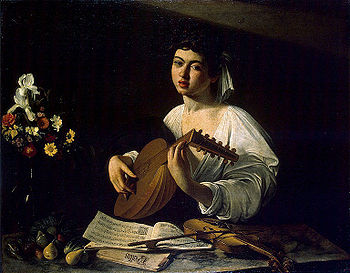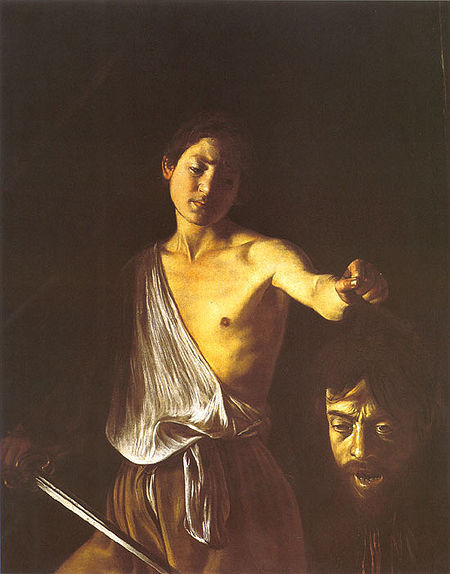Michelangelo Merisi da Caravaggio
Michelangelo Merisi da Caravaggio (September 29th 1571 – 18 July 1610) was an Italian Baroque painter with great influence both in Italy and abroad. He was born in Caravaggio (just ouside Milan), Lombardy, Italy. He took his name from the village where he was born.
Caravaggio painted Roman gods and Christian saints as if emerging out of darkness. Most of his religious paintings emphasize sadness, suffering and death.
Caravaggio is particularly renowned for his use of chiaroscuro, a technique that uses light and dark to achieve a 3-D effect. [1] He is best known for his bold, realistic style and the dramatic expression of his striking compositions. [2]
Caravaggio had an extraordinary influence in his time, as he turned European art from the ideal viewpoint of the Renaissance to focus on the idea that simple reality was of primary importance. He chose common people as his subjects and painted them in ordinary surroundings. Caravaggio’s realism and chiaroscuro technique made a lasting impression on generations of artists, including Rubens, Rembrandt, Diego Velázquez and Bartolomé Esteban Murillo. [3]
Caravaggio was the first great representative of the Baroque Era.
Petite Gallery
See also
- Painting Schools
- Painting Masterpieces
- Carlino Dolci
- Sir Lawrence Alma Tadema/Gallery
- Most Popular Paintings in Conservapedia
External links
- Michelangelo Merisi
- Caravaggio Olga's Gallery.


















